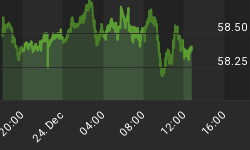The first crash in subprime mortgage bonds wasn't noticed until the price had plunged to 73 in late February. When it was discovered by Wall Street strategists it was quickly judged to be an isolated event. Then, with the rebound to 84.60 in late May it lost its focus even as an event, let alone a contagious one.
Then the price of the mortgage bond again turned down to take out the February low in late June, when a number of Fed spokesmen argued that "the pain from the subprime mess will be contained."
The breakdown was at 73 and the plunge took it to yesterday's 51.62, which decline seemed to prompt yet more observations that the distress could be isolated.
History provides reliable instruction on credit expansions and credit contractions. One causes the other and the corruption of central banking from the duty of providing a sound currency to being the bender of last resort has exacerbated the booms, which in turn will exacerbate the inevitable contraction.
Those armed with interventionist theories rather than with the evidence of financial history seem compelled to deny a natural turn towards a credit contraction, when its time has come.
This occurred with the culmination of the tech-mania in 1Q 2000. Pundits stayed with the theme that you had to buy the stock market because "there was no inflation". One of the features of that boom was that it did not include commodity price inflation - mainly inflation of stock prices.
Today's story has been remarkably different as "you have to buy equities because there is inflation in commodity prices." However, although the pitch is opposite to that of 1Q 2000, a boom is a boom and the actual stories, while interesting, have been controlled by the credit markets. Typically near the culmination of huge speculative action the yield curve will turn from inversion to steepening, at which time usually the wheels begin to fall off the most egregious speculations.
Recent examples would include nickel's 40% plunge and the subprime "mess" becoming more acute as it afflicts the traditional corporate bond market.
Describing the problem as a "mess" implies that it is isolated and eligible for fixing.
This was the case with the "Asian Crisis" that started with the Thai baht on July 1, 1997. The problem followed excessive local speculation blowing out and on the usual liquidity crisis the central bank suffered a shocking loss of reserves. The financial media overlooked the real problem and described it as "currency turmoil", with the implication that it could be fixed by wise policy. The other reporting blunder was the insistence that credit distress would be isolated to Thailand.
Then when it afflicted the Philippines, media still insisted that it could be contained. Well, as the world discovered, the distress couldn't be contained and despite the affliction spreading U.S. corporate spreads did not adjust for risk until it was too late and in October suffered the worst hit in a decade.
All the way down the slide the establishment insisted that it was currency turmoil and that it could be contained.
The current subprime "mess" turned acute earlier in the year, and traditional corporate spreads remained immune until mid June. After basking in splendid isolation at record narrow spreads, widening has taken junk from 418 bps over treasuries to 595 bps. With this the yield has jumped from 9.50% to almost 11%, which would knock some 13 points off a representative junk-bond.
Usually junk-bonds and the stock market go up and down together. Given the nature of credit the stock market will get in line with the building liquidity crisis.
As with the end of previous credit inflations, the contraction is progressing from sector to sector. This time around it started with subprime mortgage bonds and has now taken out junk which most of the time acts like a stock.
This is likely the biggest train wreck in financial history and until today, in looking at the senior stock indexes the bulls are getting aboard the last train into Dodge City.
















